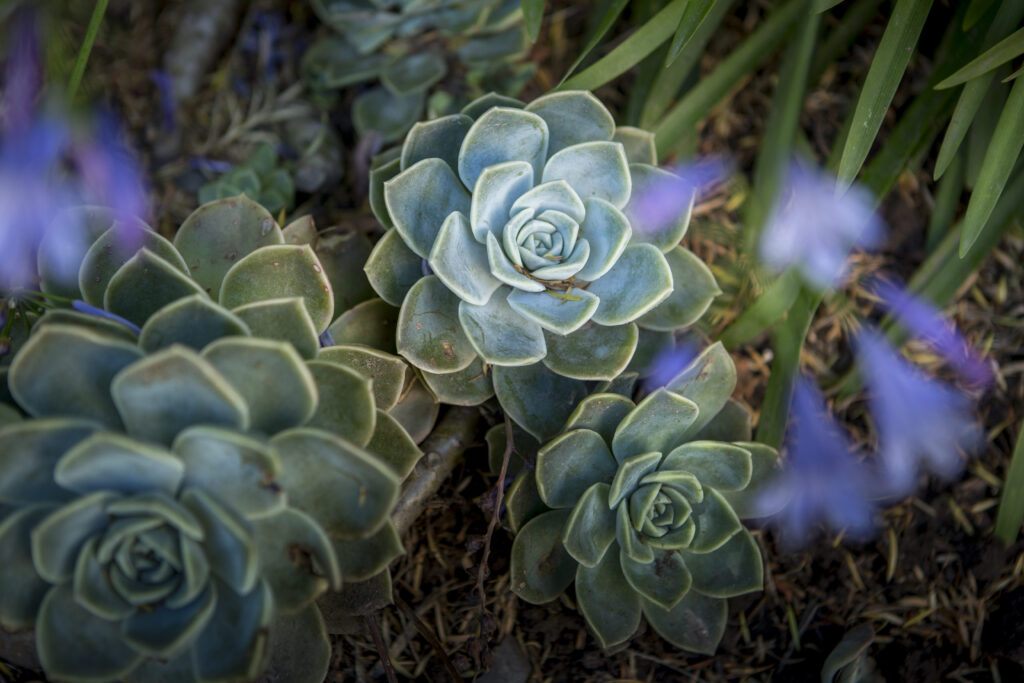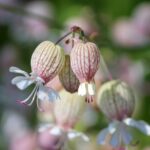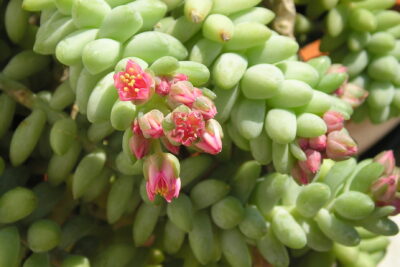
The Fascinating World of Blooming Succulents: Unveiled

Succulents have become increasingly popular in recent years, with their unique shapes, vibrant colors, and low maintenance requirements making them a favorite among plant enthusiasts and beginners alike. These resilient plants are known for their ability to store water in their leaves, stems, and roots, allowing them to survive in arid environments. While succulents are often appreciated for their sculptural appearance, their blooming process is equally captivating, showcasing stunning flowers that add an extra layer of beauty to these already intriguing plants.
We will delve into the world of blooming succulents, exploring the different types of succulents that produce flowers and the factors that influence their blooming. We will discuss the various colors, shapes, and sizes of succulent flowers, as well as the conditions necessary for successful blooming. Additionally, we will provide tips and techniques for encouraging your succulents to bloom, ensuring that you can enjoy the full potential of these remarkable plants. So, whether you are a succulent enthusiast looking to expand your knowledge or a beginner curious about the wonders of blooming succulents, read on to uncover the secrets of this fascinating plant world.
- Provide proper lighting for your succulents to ensure healthy blooming
- Water your succulents sparingly to prevent overwatering and promote blooming
- Use a well-draining soil mix for your succulents to prevent root rot and encourage blooming
- Give your succulents regular doses of fertilizer during their active growth period to enhance blooming
- Choose the right succulent species that are known for their vibrant and abundant blooms
- Maintain the right temperature and humidity levels for your succulents to support blooming
- Prune and groom your succulents regularly to encourage blooming and maintain their shape
- Provide adequate airflow and ventilation around your succulents to prevent diseases and promote blooming
- Protect your succulents from pests and diseases that can hinder their blooming potential
- Be patient and consistent with your care routine, as succulents may take time to bloom
- Frequently Asked Questions
Provide proper lighting for your succulents to ensure healthy blooming
When it comes to ensuring healthy blooming for your succulents, providing them with proper lighting is crucial. Succulents thrive in bright light conditions, but it's important to strike a balance and avoid exposing them to direct, intense sunlight for prolonged periods.
One of the key factors to consider is the succulent's natural habitat. Most succulents originate from arid regions where they receive plenty of sunlight. Therefore, replicating these conditions indoors by placing your succulents near a sunny window or under grow lights is essential.
However, it's crucial to be mindful of the intensity and duration of the light exposure. Intense, direct sunlight can scorch the leaves of succulents, leading to discoloration and damage. To prevent this, you can provide filtered light or partial shade by using sheer curtains or placing the succulents a few feet away from the window.
Additionally, rotating your succulents regularly can promote even growth and prevent them from leaning towards the light source. This ensures that all parts of the plant receive adequate light, allowing for healthier and more balanced blooming.
Remember, each succulent has different lighting requirements, so it's essential to research the specific needs of your plants. While most succulents prefer bright light, some varieties, such as Haworthias and certain Echeverias, can tolerate lower light levels.
 Guide to Rare Pink Succulents with Butterfly-Shaped Leaves
Guide to Rare Pink Succulents with Butterfly-Shaped LeavesProviding proper lighting for your succulents is a critical aspect of ensuring healthy blooming. By replicating their natural habitat, avoiding direct, intense sunlight, and rotating your plants regularly, you can create an environment that encourages robust growth and vibrant blooms.
Water your succulents sparingly to prevent overwatering and promote blooming
When it comes to caring for succulents, one of the most important factors to consider is proper watering. Succulents have adapted to survive in arid conditions, which means they are excellent at storing water in their leaves, stems, and roots. This unique characteristic allows them to thrive in environments where other plants would struggle.
However, it's crucial to water your succulents sparingly to prevent overwatering. Overwatering can lead to root rot and other issues that can hinder blooming. Succulents actually prefer to be slightly underwatered rather than overwatered, as this replicates their natural habitat and encourages blooming.
So, how often should you water your succulents? It depends on various factors such as the type of succulent, the size of the pot, and the climate in which you live. As a general rule of thumb, it's best to wait until the soil is completely dry before watering your succulents again. This ensures that you're not overwatering them and allowing their roots to have some time to dry out.
Additionally, it's essential to water your succulents thoroughly when you do water them. This means watering until the water drains out from the bottom of the pot. This helps flush out any excess salts or minerals that may have built up in the soil, preventing potential damage to the roots.
Remember to always use well-draining soil specifically formulated for succulents. This type of soil allows excess water to flow through quickly, preventing waterlogged conditions that can be detrimental to the health of your succulents.
 Rare Succulent Collection: Unique Cacti & Pineapple Varieties
Rare Succulent Collection: Unique Cacti & Pineapple VarietiesKey Takeaway: Water your succulents sparingly and only when the soil is completely dry. Use well-draining soil and water thoroughly to ensure healthy roots and promote blooming.
Use a well-draining soil mix for your succulents to prevent root rot and encourage blooming
When it comes to growing blooming succulents, one of the most important factors to consider is the type of soil you use. Succulents thrive in well-draining soil that allows excess water to flow out easily. This is crucial for preventing root rot, which can be detrimental to your plants' health.
Avoid using regular potting soil, as it tends to retain water and can lead to waterlogged roots. Instead, opt for a specially formulated succulent soil mix or create your own by combining equal parts of sand, perlite, and cactus potting mix. This combination provides excellent drainage while also retaining enough moisture for your succulents to thrive.
By using a well-draining soil mix, you create an environment that mimics the natural conditions in which succulents grow. In their native habitats, these plants are often exposed to periods of heavy rainfall followed by long periods of drought. The ability of the soil to quickly drain excess water ensures that their roots are not sitting in stagnant water for extended periods, preventing root rot.
Furthermore, using a well-draining soil mix can also help stimulate blooming in your succulents. When the roots are healthy and not stressed by excess moisture, they can better absorb the essential nutrients needed for blooming. This, in turn, promotes robust growth and encourages the production of vibrant blossoms.
Remember to repot your succulents every 1-2 years to ensure they have fresh, nutrient-rich soil and adequate space for their roots to spread. Additionally, pay attention to the drainage holes in your pots to prevent water from accumulating at the bottom, as this can lead to root rot even with a well-draining soil mix.
 Discover the Stunning Flowering Succulents that Transform Gardens
Discover the Stunning Flowering Succulents that Transform GardensGive your succulents regular doses of fertilizer during their active growth period to enhance blooming
Introduction:
Blooming succulents are a sight to behold! These resilient plants, known for their ability to store water in their leaves and stems, produce stunning flowers during their active growth period. To unlock the full potential of your succulents and enjoy their beautiful blooms, it's crucial to provide them with the right care and nourishment. One key aspect of this care routine is regular fertilization. In this section, we will dive deeper into the importance of fertilizing succulents and discover the best practices to enhance their blooming phase.
The Role of Fertilizer:
Fertilizers act as supplements that provide essential nutrients to succulents. During their active growth period, succulents require an extra boost of nutrients to support the energy-intensive process of blooming. Fertilizers contain a balanced mix of nitrogen, phosphorus, and potassium, along with trace elements like iron, magnesium, and zinc. These elements promote healthy foliage growth, root development, and most importantly, flower production.
Choosing the Right Fertilizer:
When it comes to selecting a fertilizer for your succulents, it's crucial to opt for a well-balanced formula. Look for a fertilizer with an NPK ratio of 10-10-10 or similar. This balanced ratio ensures that your succulents receive an equal proportion of nitrogen, phosphorus, and potassium, without overstimulating any particular aspect of growth. Additionally, choose a water-soluble fertilizer that can be easily absorbed by the plants' roots.
Note: It's important to dilute the fertilizer according to the manufacturer's instructions to avoid overfertilization, which can damage your succulents.
Application Method:
To fertilize your succulents, dilute the recommended amount of fertilizer in water, following the instructions on the packaging. Apply the diluted fertilizer to the soil around the base of the plant, making sure to avoid direct contact with the leaves. This method allows the roots to absorb the nutrients gradually, promoting healthy growth and blooming. Remember to water your succulents thoroughly before and after fertilization to prevent any potential damage to the roots.
Frequency of Fertilization:
During the active growth phase, which generally occurs in spring and summer, fertilize your succulents every two to four weeks. As the plants enter their dormant period in fall and winter, reduce the frequency of fertilization to once every two months or stop altogether. This seasonal adjustment ensures that your succulents receive the right amount of nutrients at the appropriate times.
 Popular Indoor Succulents: Common Varieties for Your Home!
Popular Indoor Succulents: Common Varieties for Your Home!Conclusion:
Fertilizing your succulents is a vital aspect of their care routine, especially if you want to witness their magnificent blooms. By choosing the right fertilizer, applying it correctly, and adjusting the frequency based on the seasons, you can provide your succulents with the necessary nutrients to thrive and showcase their vibrant blossoms. Remember, a well-fed succulent is a happy succulent!
Choose the right succulent species that are known for their vibrant and abundant blooms
When it comes to succulents, their unique and diverse beauty is often associated with their ability to thrive in arid conditions. However, there is a lesser-known side to these resilient plants that is often overlooked - their stunning blooms. Yes, you read that right! Succulents not only boast attractive foliage but also produce colorful and captivating flowers.
But how do you choose the right succulent species if you're specifically looking for those that bloom? Here are a few pointers to help you select the perfect blooming succulents:
- Research, research, research: Start by doing some research on different succulent species that are known for their blooms. Look for plants that have specific names associated with flowering, such as Echeveria 'Afterglow' or Kalanchoe blossfeldiana. There are also certain genera, like Aloe, Crassula, and Sedum, that are more likely to produce blooms.
- Consider the growing conditions: Blooming succulents have specific requirements when it comes to light, temperature, and water. Make sure to choose a species that is suitable for your particular environment. Some succulents thrive in full sun, while others prefer partial shade. Understanding their specific needs will increase your chances of successful blooming.
- Inspect the plant: When purchasing a succulent, examine it closely to see if it has any flower buds or signs of future blooms. If the plant already has buds, it's a good indication that it will soon display its vibrant blossoms. However, even if it doesn't have buds, don't lose hope. Some succulents take time to mature and bloom, so be patient.
- Ask the experts: If you're still unsure about which succulent species to choose, don't hesitate to seek advice from knowledgeable nursery staff or fellow succulent enthusiasts. They can provide valuable insights and recommendations based on their experiences.
By following these guidelines, you can select the right succulent species that are known for their vibrant and abundant blooms. Remember, blooming succulents add an extra layer of beauty and charm to your indoor or outdoor spaces, making them a delightful addition to any plant collection.
Maintain the right temperature and humidity levels for your succulents to support blooming
When it comes to the fascinating world of blooming succulents, maintaining the right temperature and humidity levels is crucial. These factors play a significant role in supporting the blooming process of your succulents and ensuring their overall health.
Succulents are known for their ability to thrive in arid conditions, but they still require specific temperature ranges and humidity levels to bloom successfully. Here are some essential tips to help you create the ideal environment for your succulents to bloom:
 Discover the Most Popular Arctic Ice Succulent Varieties
Discover the Most Popular Arctic Ice Succulent Varieties1. Temperature:
Succulents generally prefer warmer temperatures, with most varieties thriving between 60°F (15°C) and 80°F (27°C). However, it's essential to remember that different succulent species have varying temperature preferences. Research the specific requirements of your succulent species to ensure you maintain the right temperature range for optimal blooming.
2. Humidity:
Succulents are native to dry and arid regions, so they naturally thrive in low humidity environments. High humidity can cause problems for succulents, such as root rot and fungal diseases. Aim to maintain a humidity level between 30% and 50% to promote healthy blooming.
To achieve the ideal humidity levels for your succulents, consider the following strategies:
- Proper Ventilation: Ensure adequate air circulation around your succulents by placing them in well-ventilated areas or near a fan. This helps prevent excess moisture buildup and reduces the risk of humidity-related issues.
- Avoid Overwatering: Overwatering is a common mistake that can lead to increased humidity levels in the soil. Succulents have unique water requirements, and it's crucial to allow the soil to dry out completely between waterings. This helps maintain lower humidity levels in the root zone.
- Use a Humidity Tray: Placing your succulents on a tray filled with pebbles and water can help create a microclimate of higher humidity around the plants. Just make sure the pots are not sitting in the water, as this can lead to root rot.
By maintaining the right temperature and humidity levels, you provide the optimal conditions for your succulents to bloom. Remember to research the specific requirements of your succulent species and adjust accordingly. With the right care, you can witness the mesmerizing beauty of blooming succulents.
Prune and groom your succulents regularly to encourage blooming and maintain their shape
When it comes to succulents, their vibrant blooms can be a true marvel to behold. Pruning and grooming your succulents regularly is an essential practice to encourage blooming and keep them in optimal shape. By dedicating some time to care for these unique plants, you can unlock the full potential of their stunning blossoms.
Why pruning is crucial for blooming succulents
Pruning plays a crucial role in the blooming process of succulents. By removing dead or dying leaves, you are allowing more energy to be directed towards producing vibrant flowers. Additionally, pruning helps in maintaining the overall shape and size of your succulents, ensuring they remain visually appealing.
 Discover Beautiful Succulents with Bell-Shaped Flowers: A Guide
Discover Beautiful Succulents with Bell-Shaped Flowers: A GuideWhen should you prune your succulents?
The best time to prune your succulents is during their active growth period, which typically occurs in spring or early summer. It's important to avoid pruning during their dormant phase, as this can hinder their ability to bloom. Keep an eye out for new growth and vibrant colors before reaching for your pruning shears.
How to prune your succulents for optimal blooming
When it comes to pruning your succulents, here are a few key steps to follow:
- Start by inspecting your succulent for any dead or dying leaves. These can be easily identified by their brown or yellow color.
- Using a pair of clean and sharp pruning shears, carefully remove these unhealthy leaves by cutting them as close to the stem as possible.
- If your succulent has grown leggy or elongated, consider beheading it. This involves cutting off the top portion of the plant and allowing it to form new roots. The remaining stem can then sprout new growth, resulting in a bushier and more compact succulent.
- After pruning, it's crucial to provide your succulents with adequate sunlight, water, and nutrients to support their blooming process.
Additional tips for maintaining blooming succulents
In addition to regular pruning, here are a few more tips to help your succulents thrive and bloom:
- Proper watering: Succulents are known for their ability to store water in their leaves, so be cautious not to overwater them. Allow the soil to dry out between watering sessions.
- Provide adequate sunlight: Succulents thrive in bright, indirect sunlight. Place them near a window or in a well-lit area to ensure they receive the light they need.
- Fertilize sparingly: While succulents don't require excessive fertilizing, a diluted succulent fertilizer can provide them with the necessary nutrients for blooming.
- Monitor for pests: Keep an eye out for common succulent pests like mealybugs or spider mites. Regularly inspect your plants and take appropriate measures if infestations occur.
By following these pruning and maintenance practices, you can uncover the fascinating world of blooming succulents. Witnessing their vibrant flowers and thriving foliage will undoubtedly bring joy and fascination into your life.
Provide adequate airflow and ventilation around your succulents to prevent diseases and promote blooming
When it comes to caring for your succulents, providing adequate airflow and ventilation is crucial for their overall health and promoting blooming. Succulents are known for their ability to survive in arid conditions, but this doesn't mean they don't need fresh air circulating around them.
Why is airflow important?
 Thriving Succulents: Discover Fast-Growing Varieties
Thriving Succulents: Discover Fast-Growing VarietiesAdequate airflow helps prevent the build-up of moisture, which can lead to the development of fungal diseases such as root rot. Succulents have adapted to store water in their leaves and stems, making them more susceptible to rot if they are constantly exposed to excessive moisture. Good airflow helps to evaporate excess moisture, keeping your succulents dry and healthy.
How to provide airflow and ventilation for your succulents?
Here are some tips to ensure proper airflow and ventilation for your succulents:
- Space them out: Avoid overcrowding your succulents as this can limit airflow. Give each plant enough space to grow and spread its leaves.
- Choose the right pot: Opt for pots with drainage holes to allow excess water to escape. This prevents water from pooling around the roots and promotes airflow.
- Position them strategically: Place your succulents in areas with good air circulation, such as near open windows or in well-ventilated rooms.
- Use a fan: If your succulents are kept indoors or in a closed space, consider using a fan to promote air movement. Set it to a low or medium speed to avoid drying out the plants.
- Prune and remove dead leaves: Regularly inspect your succulents and remove any dead or decaying leaves. This helps prevent the spread of diseases and improves airflow.
The benefits of proper airflow for blooming succulents
By ensuring adequate airflow and ventilation, you create an environment that mimics their natural habitat, encouraging healthy growth and blooming. Proper airflow prevents the stagnation of air, which can attract pests and lead to diseases. It also helps distribute carbon dioxide and oxygen evenly, supporting the photosynthesis process necessary for blooming.
Remember, providing your succulents with the right conditions, including adequate airflow and ventilation, is essential for their overall well-being and to unlock their full blooming potential.
Protect your succulents from pests and diseases that can hinder their blooming potential
 Top Succulent Plants: Perfect Elephant Food for a Nutritious Feast
Top Succulent Plants: Perfect Elephant Food for a Nutritious FeastWhen it comes to succulents, their unique ability to store water in their leaves and stems makes them hardy and low-maintenance plants. However, just like any other plant, succulents can still be susceptible to pests and diseases that can hinder their blooming potential. It is important to take necessary precautions and implement preventive measures to keep your succulents healthy and thriving.
Identifying common pests
Some common pests that can pose a threat to your succulents include aphids, mealybugs, spider mites, and scale insects. These tiny intruders feed on the sap of the plants, causing damage to the leaves, stems, and flowers. Look out for signs such as discolored or distorted leaves, sticky residue, or small webs. Early detection is crucial in preventing a full-blown infestation.
To eliminate these pests, you can use organic insecticidal soaps or neem oil sprays. Make sure to follow the instructions on the product label and apply it carefully, covering all affected areas. Additionally, regularly cleaning and inspecting your succulents can help prevent the spread of pests and ensure a healthy environment for them to bloom.
Preventing diseases
Succulents are generally resistant to diseases, but certain conditions can make them prone to infections. Overwatering, poor drainage, and high humidity levels can create a favorable environment for diseases such as root rot and fungal infections. To prevent these issues, it is important to provide well-draining soil and water your succulents sparingly.
Another preventive measure is to avoid overhead watering, as it can lead to the growth of fungal spores. Instead, water at the base of the plant and allow the soil to dry out between waterings. This will help prevent excessive moisture and protect your succulents from potential diseases.
Maintaining optimal growing conditions
Ensuring that your succulents are in the right growing conditions will not only help prevent pests and diseases but also promote blooming. Provide them with ample sunlight, as most succulents thrive in bright, indirect light. However, be cautious of intense midday sun, as it can scorch the leaves.
Additionally, maintaining a proper watering schedule is crucial. Succulents have adapted to survive in arid climates, so they prefer infrequent, deep waterings rather than frequent shallow ones. This mimics their natural habitat and encourages healthy root growth, ultimately leading to blooming.
 Discover Low-Maintenance Bush-Like Plants That Resemble Succulents
Discover Low-Maintenance Bush-Like Plants That Resemble SucculentsRegularly fertilizing your succulents with a balanced, low-nitrogen fertilizer can also boost their blooming potential. Look for fertilizers specifically formulated for succulents and follow the recommended application instructions.
By protecting your succulents from pests and diseases, you can unlock their blooming potential and enjoy the beauty of their vibrant flowers. Be proactive in identifying and eliminating pests, create optimal growing conditions, and maintain a proper watering and fertilizing routine. With these measures in place, your succulents will thrive and reward you with a captivating display of blooms.
Be patient and consistent with your care routine, as succulents may take time to bloom
If you want to witness the breathtaking beauty of blooming succulents, it's important to be patient and consistent with your care routine. While succulents are generally low-maintenance plants, they may take some time to bloom.
When it comes to blooming succulents, it's essential to provide them with the right conditions and care. Here are some tips to help you on your journey of unveiling their captivating blossoms:
1. Provide Adequate Sunlight
Succulents thrive in bright light conditions, so make sure to place them in an area where they can receive at least 6 hours of direct sunlight per day. A south-facing window or a well-lit spot in your garden would be ideal.
2. Water Sparingly
Succulents are known for their ability to store water in their leaves, stems, or roots. To encourage blooming, it's important not to overwater them. Allow the soil to dry out completely between waterings and avoid waterlogging, as excess moisture can lead to root rot.
3. Use Well-Draining Soil
Using a well-draining soil mix is crucial for succulents, as it prevents water from stagnating around the roots. You can create a suitable mix by combining regular potting soil with perlite or coarse sand to improve drainage.
 Top Yellow Flowering Succulent Ground Cover Options for Your Garden
Top Yellow Flowering Succulent Ground Cover Options for Your Garden4. Provide Adequate Nutrients
While succulents are known for their ability to thrive in nutrient-poor conditions, providing them with some fertilizer during the growing season can help stimulate blooming. Use a balanced, water-soluble fertilizer diluted to half strength, and apply it every 2-4 weeks.
5. Maintain Optimal Temperature
Succulents prefer warm temperatures and can tolerate a wide range, but they may require specific temperature conditions to bloom. Most succulents bloom best when the temperature ranges between 60°F to 80°F (15°C to 27°C). Avoid exposing them to extreme temperatures or sudden fluctuations.
6. Be Patient
Patience is key when it comes to blooming succulents. Some species may take months or even years to produce flowers. Remember to maintain a consistent care routine and give your succulents time to grow and develop.
By following these tips and being attentive to the needs of your succulents, you'll increase the chances of witnessing their magnificent blooms. Keep in mind that not all succulents bloom, and each species has its own unique blooming patterns. So, embrace the journey and enjoy the beauty of nature's creations.
Frequently Asked Questions
1. How often should I water my succulents?
Succulents need to be watered sparingly, usually once every 1-2 weeks. It's important to let the soil dry out completely between waterings.
2. Can I plant succulents in regular potting soil?
No, succulents require well-draining soil to prevent root rot. It's best to use a special succulent or cactus mix that contains perlite or pumice to improve drainage.
3. How much sunlight do succulents need?
Most succulents thrive in bright, indirect sunlight. They can tolerate some direct sun, but too much can cause sunburn and damage the leaves.
4. Do succulents need fertilizer?
While succulents don't require frequent fertilizing, a diluted succulent fertilizer can be applied during the growing season to promote healthy growth. Be careful not to over-fertilize, as this can harm the plant.
If you want to read more articles similar to The Fascinating World of Blooming Succulents: Unveiled, you can visit the Varieties and Colors category.






You Must Read